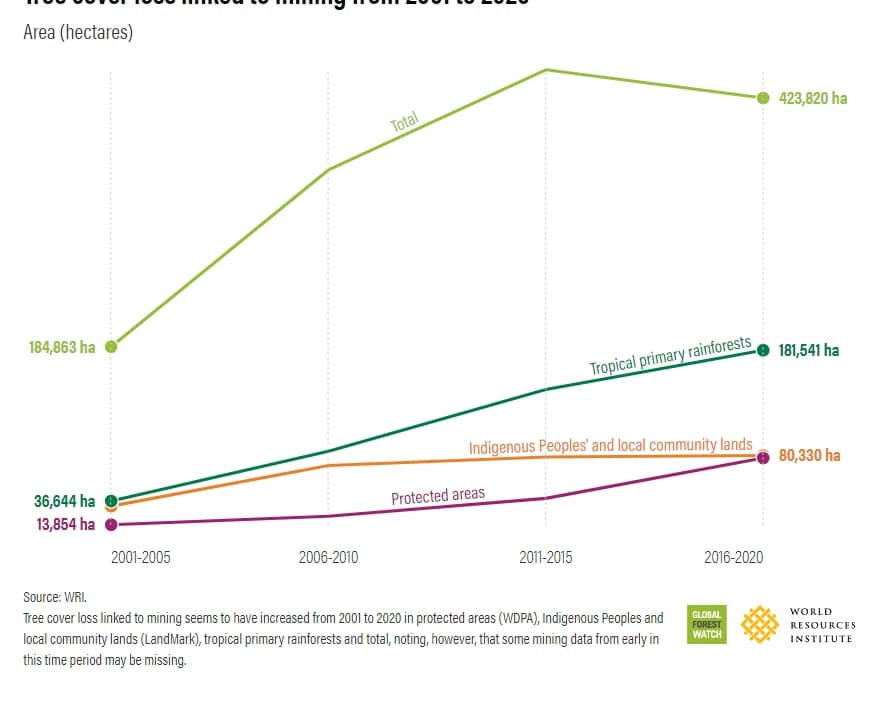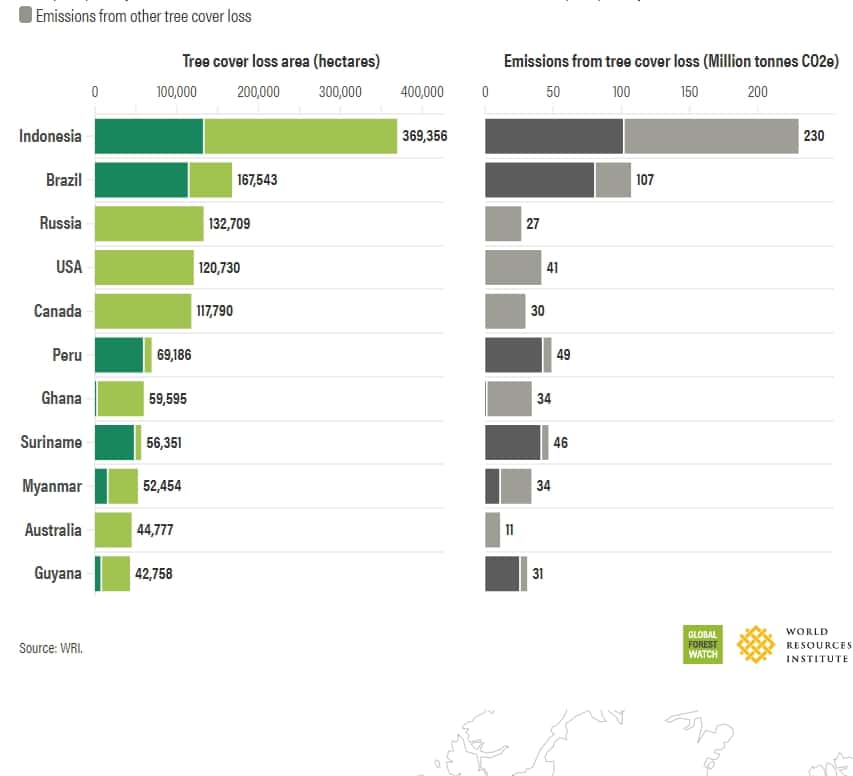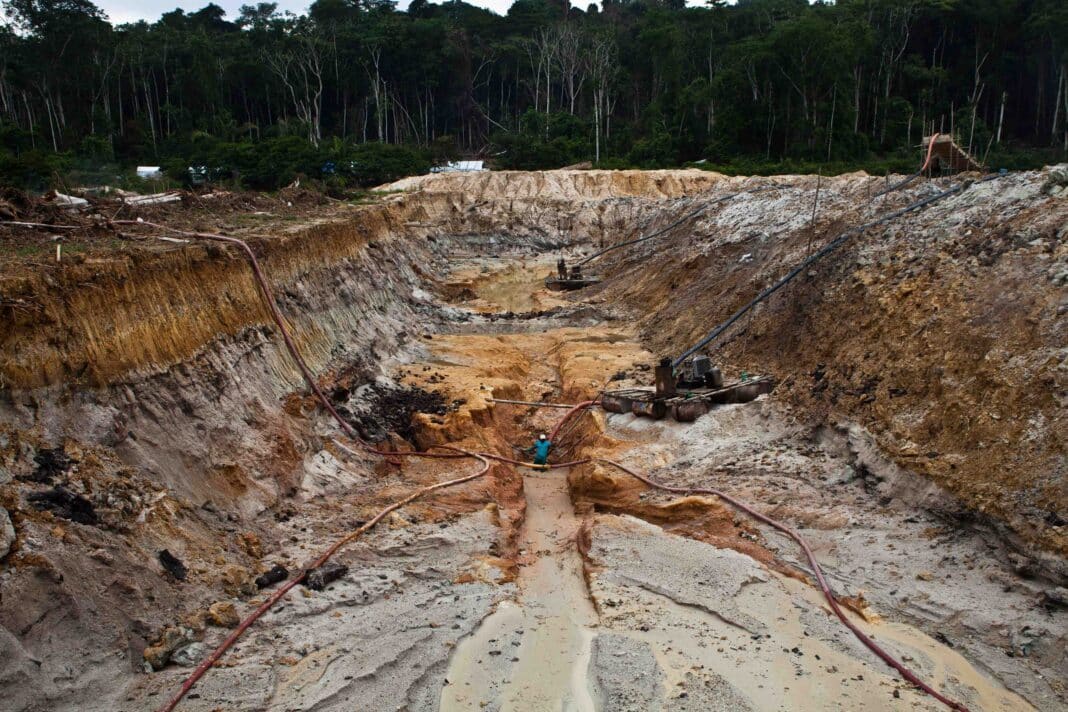Mining is one of the fastest growing causes of deforestation, with a new report published by the World Resources Institue (WRI) revealing that 1.4 million hectares of forests, an area the size of Montenegro, was lost to the extraction of coal, iron and industrial minerals for the 20 years to 2020.
“Since the turn of the century, mining has increased by 52%,” the WRI said, adding that “in some cases, this extraction has come at the expense of forests, along with burdens to the communities who rely on them.”
“Felling trees also released 36 million tonnes of carbon dioxide equivalent (CO2e) per year into the atmosphere, similar to Finland’s fossil fuel emissions in 2022,” according to the report prepared by Radost Stanimirova, Nancy Harris, Katie Reytar, Ke Wang and Melissa Barbanell.
Using analyzed tree cover loss data from the University of Maryland and a combination of studies on global mining, WRI found that mining had a disproportional impact on some of the world’s most vulnerable forests:
“Although mining’s role in global tree cover loss is small compared to the main drivers (for example, 130 million hectares were lost due to forestry and 90 million hectares from fire, it can have outsized impacts regionally.”
“This includes tropical primary rainforests, some of the world’s most important ecosystems where mining is a growing loss driver, and Indigenous and local community territories, where people depend on forests for their livelihoods.”

Of the 1.4 million hectares of loss, 450,000 were in tropical primary rainforests, 150,000 were in protected areas, and 260,000 were in Indigenous Peoples’ and local community lands – a figure that does not account for indirect loss caused by mining activities, such as building access roads for heavy machinery, storage and other infrastructure.
What’s Driving Mining-related Forest Loss?
Gold and coal have historically been the primary drivers of mining-related tree loss. According to a WWF study, gold and coal extraction resulted in over 71% of all mining-related deforestation from 2001 to 2019: “The current gold mining boom started shortly after the 2008 global financial crisis when the price of gold took off. And while coal use is declining, it still dominates the global energy mix, generating approximately 36% of electricity in 2022.”
More than 89% of the loss is concentrated in just 11 countries, including Indonesia, Brazil, Russia, the United States, Canada, Peru, Ghana, Suriname, Myanmar, Australia and Guyana.

“Indonesia has the highest tree cover loss linked to mining (370,000 hectares) followed by Brazil (170,000 hectares), primarily due to coal mining and small-scale gold mining, respectively. Both countries are home to extensive swaths of tropical primary rainforests.”
To address the surge, the WRI is now calling for global governments to support major reforms that will “empower forest defenders and to manage demand for mined materials.” These include:
- Protecting Forests and People
- Demand Management
- Responsible Mining
“While there are many voluntary standards to support responsible mining, there is little evidence that the sector has improved,” the WRI said, with governments working with the private sector to promote responsible mining in several ways, including stringent regulatory policies, stronger enforcement of existing environmental laws (for example in Australia), and downstream pressure on the supply chain to demonstrate traceability.
Global Deforestation is ‘Surging Ahead’ but Australia Leads Fightback
The new report comes after Wood Central revealed that more than 6.4 million hectares of forest were lost to deforestation last year, a rate much higher than three years ago, when 140 countries vowed to end deforestation by the close of the decade. That is, according to the 2024 Forest Declaration Assessment, the rate of forest degradation worldwide is immense: “Globally, an area twice the size of Germany fell from a higher to a lower ecological integrity class in 2022.”
It found that Australia—home to the world’s seventh largest forest area—is, along with Colombia, Vietnam, Venezuela, and Paraguay, the only country with major forest areas that remain “on track” to achieve zero deforestation by 2030.
- To learn more about this report, click here to read Wood Central’s exclusive report.






